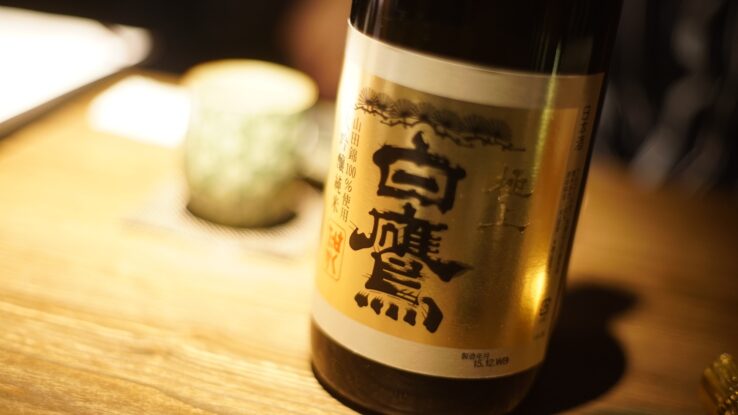Sake Tasting 101: How to Taste and Appreciate Japanese Rice Wine
Kampai! (Meaning “emptying the glass”, or “cheers” in Japanese).
Drinking sake is celebratory, yet comforting, traditional, yet trendy. Sake consumption is evolving and growing as people recognize the rich complexities and aromas of Japan’s national drink. The US and Canada now account for 29% of the global sake market.
Sake education is also on the rise. With more people curious about the intriguing spirit, learning about it has never been easier. Whether you are an advanced connoisseur of sake or a beginner curious about the complexities of the Japanese beverage, sake education courses help expand your knowledge of the niche beverage.
Are you ready to tantalize your senses through the wonderful world of sake?
Let us take you on a journey on how to fully experience the famed Japanese rice wine. Keep reading for our complete sake-tasting guide.
What Is Sake?
In the Japanese language, sake simply means “alcoholic drink.” Outside of Japan, the word sake represents the Japanese drinks that the Japanese people call “nihonshu”. Sake, or nihonshu, is a beverage made through a process of fermenting and filtering water, rice, and koji—a type of safe mold also called Aspergillus oryzae.
While all three ingredients are important to the quality of the sake, many regard water as the most important to the quality and the taste of the sake.
Rice is also very important to the production of sake. There are many different varieties of rice used in the production of sake. Each rice varietal yields unique flavor profiles in the sake.
Grades of Sake
The most important factor in the production of sake is the “seimaibuai” which refers to the percentage of the rice grain that remains after polishing. The polishing of the rice happens before the grain is used in the brewing process. In most cases, a more polished rice will result in a more refined sake flavor profile.
Sakes are typically broken down into two main “classifications”: basic sake (non-premium sake) and premium sake (special designation sake). Most sake produced today is non-premium, basic sake.
Basic Sake
The two non-premium types of sake are Futsushu and Sanzoshu. They are both brewed for value, using cheaper rice grades that are less polished, therefore delivering a less refined flavor profile. These types are also brewed with significant additional amounts of distilled alcohol and other additives.
Futsushu translates in English to “normal sake”. It’s the type most Americans are familiar with. Much like table wines, you can get a decent bottle at a good price.
Premium Sake
Premium sakes, also called “special designation” sakes, are tightly regulated sakes categorized by two factors:
- The addition of distilled alcohol during the brewing process
- The extent of “seimaibuai” (how polished the rice is before brewing)
Some categories of premium sake are:
- Tokutei Meishousu
- Honjozo
- Ginjo
- Tokubetsu
Types of Sake
Within the different grades of sake are various types of sake as well. Many of them are even difficult to categorize but have standout features that make them noteworthy. Here are some of the many types of sake:
- Sparkling sake has a refreshing effervescent quality to it, similar to that of sparkling wine
- Nigori sake is a cloudy sake that has some coarsely-pressed rice solids suspended in it offering sweetness and texture
- Namazake is unpasteurized sake with a sharp, fresh flavor that must be consumed within weeks of opening and stored in the refrigerator once opened
- Genshu is undiluted sake that has no additional water added to the completed sake (this tempers the alcohol levels)
- Tarusake sake, stored for 3 to 6 months in cedar barrels, delivers a soothing woodsy flavor and is commonly used in ceremonies and festivals
- Plum and yuzu sake are fruit-flavored sakes used in cocktails and desserts
Flavor Profiles of Sake
Drinking sake means opening up a symphony of tasting notes, flavors, and elements that you can enjoy. Some are similar to what we might taste in wine, and others are unique to sake. They vary:
- From very aromatic to mild
- From sweet to dry
- In acidity levels
- In texture (soft versus crisp)
- In “Koku”, which translates to “earthiness”
- In umami, or savory richness
- In the complexity of flavor
How to Drink and Taste Sake
Sake has a long, rich history, and there is a traditional way to enjoy sake. In Japan, sake is served in small cups called “choko” and they are sipped in a similar way that you might drink tea or wine. You should drink sake as a “shot”.
It is the tradition that others should pour your sake. When someone offers to pour it into your cup, it is polite to slightly lift your cup in their direction. When everyone has been served, say, “Kampai!” before touching cups together and drinking.
While enjoyable to drink warm, sake drinks can also be taken chilled or at room temperature. The temperature you drink it at varies with personal preference and the type of sake you are drinking. Enjoy it during a casual get-together or fine dining experience, to drink with appetizers (izakayas), or during a meal.
Ready to Further Your Sake Education?
The Sake School of America offers a range of sake courses for beginners to those already with some knowledge of sake. These courses include:
Level One Sake Qualification
A perfect course for those who want an introduction to the world of sake. Some of the topics had involve breakdowns of styles and categories of sake and knowledge gained from in-class sake tasting.
Certified Sake Advisor
Open to hospitality professionals and serious sake enthusiasts, the certified sake advisor course involves lectures, sake tasting, and group discussions. Learn about the history of sake, tasting techniques, and sake classifications.
Certified Sake Sommelier
This course is great for someone who works in the food or beverage industry. The sake sommelier course will provide you with detailed sake knowledge, specifically to be able to address customer inquiries and make sake recommendations.
Certified Shochu Advisor
This course veers away slightly from sake drinks to shochu. Find out about the ingredients and history of Japan’s first distilled alcohol. In this course, you will taste shochu made from sweet potato, barley, rice, and others.
Immerse Yourself in the World of Sake
Sake is an interesting, complex beverage with thousands of years of history and tradition behind it. Grow your sake knowledge and immerse yourself in the nuances of the Japanese drinks that have captured the hearts and taste buds of so many people.
At the Sake School of America, we strive to give you the best sake education courses—courses that will enrich your lives, your careers, and your dinner conversations. Check out our catalog of sake courses today.


